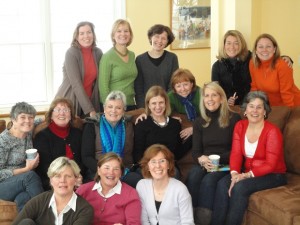The TV segment on FOXFiles in St. Louis, Missouri begins like this:
Imagine adopting a baby, but not being able to bring him home. For several hundred couples across the county, it’s a sad reality that has been going on for years, including Carri and Jason Kern of Wentzville. “We were told it would take 4 to 6 months for him to come home,” said Carri Kern, adding “it has been over 3 1/2 years.”
The have named him Hudson. He is still living Guatemala, which is where he was born. For a long time, adoptions from Guatemala were quick and easy, but the system there had become so corrupt, in 2007 the Guatemalan government shut it down, agreeing to grandfather in hundreds of couples whose adoptions were already in progress. And one of them was Hudson’s. But because of that past corruption, adoption judges there are under now such scrutiny they have made the process cloudy, unpredictable, and long.
The Kerns have been to Guatemala for court dates 13 times. “It is a very emotional attachment, seeing him every time. You can’t let go and you can’t stop fighting,” said Jason Kern.Though Hudson has never seen his new home, he knows it is waiting for him. He already calls Carri and Jason mama and papa. They talk on Skype, and visit him in person on special occasions like Christmases, and birthdays.
Readers of this blog recognize the Kerns as belonging to the Guatemala900, families who have been waiting for their adoptions to be finalized since adoptions closed in December 2007. It’s heartbreaking to watch the TV segment and see the Kerns stand in the cozy but empty bedroom they have prepared for their son, filled with toys and books and mobiles, and to listen as they verbalize their grief.
I’ve recently been made aware of another group, known as the “Kyrgyz 65,” who also wait for their children. Gabrielle Shimkus found me on the Mamalita Facebook page and wrote:
We received our referral in Aug. 2008. A little boy, 2 months old, with a cleft lip and palate. He was as frail as could be. We had all of our paperwork here in the US approved and our dossier in Kyrgyzstan. We went for our first visit in November 2008, and spent 2 full weeks with him, loving him.
It was only supposed to be one more month before we returned to go to Kyrgyz court and take him home with us for good, but that didn’t happen. One day the Kyrgyz government heard rumblings of people forging paperwork. It turns out to be vaguely true, but of another country, not ours. That day they decided their adoption laws were too easy and in one fell swoop got rid of every law on the books. They did not consider that there were 65 families in the immediate pipeline to adopt—families, like ours, who were weeks away from that one court hearing that would have allowed us to take our kids home. Their government refused to allow our adoptions to go forward because they no longer had the laws to finish them.
Still they dangled the carrot in front of us. “Just give us a few months. 6 months we promise. You will have your kids by Christmas.” They then placed a moratorium on international adoptions.
After months of hanging by a thread, the country elected a new president, who was the first female Asian president. She heard our pleas, told us to be patient. Months more went by. A new Parliament was elected and we were promised our legislation would be one of the first to go through. It didn’t happen. The US State Department has been involved all along, but provide us with no concrete answers.
We are now 2 1/2 years since this tragedy began. The 65 families have a forum where we keep in daily contact with each other. We have contacted every Senator, Congressman, and person of influence we can think of. Some of the families have dropped off. 2 of the children have died waiting. Yes, 2 children are dead because they succumbed to illnesses treatable here in the US. It is horrible, beyond words.
The crazy thing is that all along they have said we can have our kids. Very few people are against this. They just don’t have the know-how to finish our process. Crazy to still hold on to hope when everytime it gets ripped out from under us. Still, no one will tell us “NO YOU CAN’T HAVE YOUR KID.” Maybe if they did things would be different. Maybe some of the parents could heal and move on. But the carrot is still out there dangling. We get pictures every few months, and that is the closest we come.
How can you respond to an email like this one? Or to the TV segment about the Kerns? By sending positive thoughts and prayers and solidarity? The faithfulness of hopeful adoptive parents like Carri and Jason Kern and Gabrielle Shimkus and her husband, Frank, nearly flattens me. These are people dedicated to their children.


 ShareThis
ShareThis











 ShareThis
ShareThis












